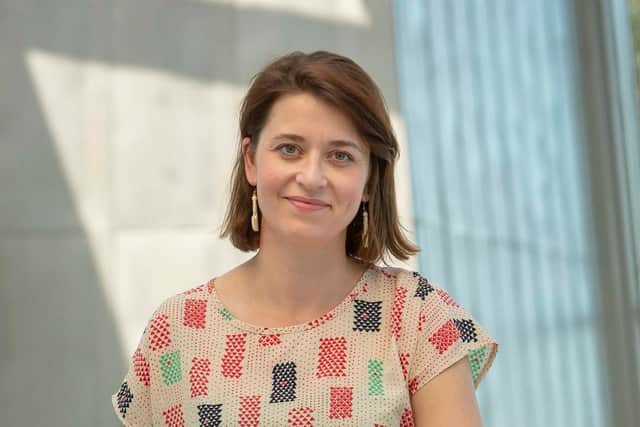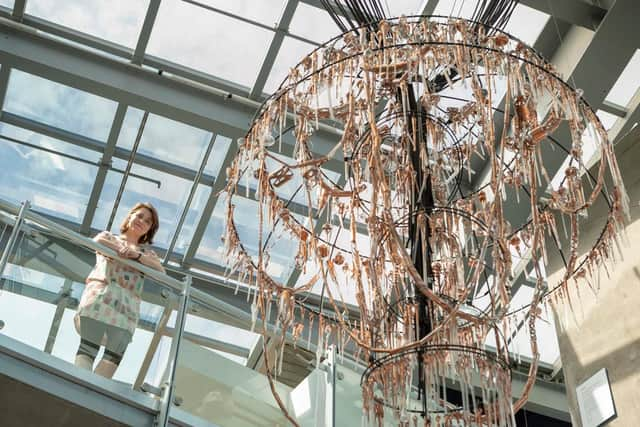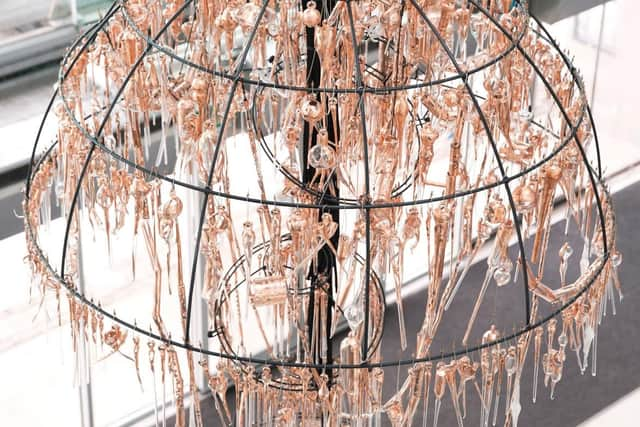Sunderland sculptor creates stunning chandelier out of waste glass


Helen Pailing, who is studying for her PhD Recycling Waste in Glass and Ceramics at the University of Sunderland, has created a beautiful chandelier made almost entirely of discarded pieces of glass.
'Adorn' is currently on display at the National Glass Centre.


Advertisement
Hide AdAdvertisement
Hide AdIt was made using almost 1,000 pieces of salvaged glass from Wearside Glass Sculptures.
To the glass makers, these pieces are the 'remnants' – rejected pieces of all different sizes - but Helen reworks them, transforming waste material into art works.
"I loved the organic shape and form of this glass, created as a result of the making process," she said.
"Building on my background in textiles a glass hook was added and then, with help from volunteers, each piece was wrapped it in copper foil. This changes the way we perceive the waste glass and the result is intended as a form of gentle activism.”


Advertisement
Hide AdAdvertisement
Hide AdAdorn is a semi-permanent installation that will change over time as the environment affects the finish of the copper.
Helen added: "It hangs like a giant pendant, an adornment for the building."
In February this year as part of the Creative Dimension Trust programme, Helen worked with local teenagers to make their own chandelier out of 'recrafted' wast glass, inspired by Adorn. Their work was displayed in the Glass Centre’s Learning Gallery in June and July.
Julia Stephenson, Head of Arts at National Glass Centre said: “National Glass Centre commissioned Helen to create a new work to be displayed in the building’s double height foyer space.


Advertisement
Hide AdAdvertisement
Hide AdThe space is a prominent location within a busy public building, dedicated to the presentation of the highest international standards in contemporary glass."The name of the piece is highly appropriate as the building now wears its own contemporary jewellery," she said.
"Everything about the piece has relevance to our time, our priorities and our location. The hanging system suggests a nod to the nautical significance of the area.
"The structure reflects the design of the building’s lighting system. The glass elements are made from the waste created by the lamp workers resident in the building.
"They draw our attention to both environmental issues and the exceptional skills of the makers and their direct link to Sunderland’s long-term connection with glass. The copper foil alters and enriches the quality of the glass.
Advertisement
Hide AdAdvertisement
Hide Ad“‘Up-cycling’ is fast becoming an established and even a standard approach within the crafts. There is, however, nothing standard about Helen Pailing’s practice. Her approach is utterly uninhibited, fresh and original."